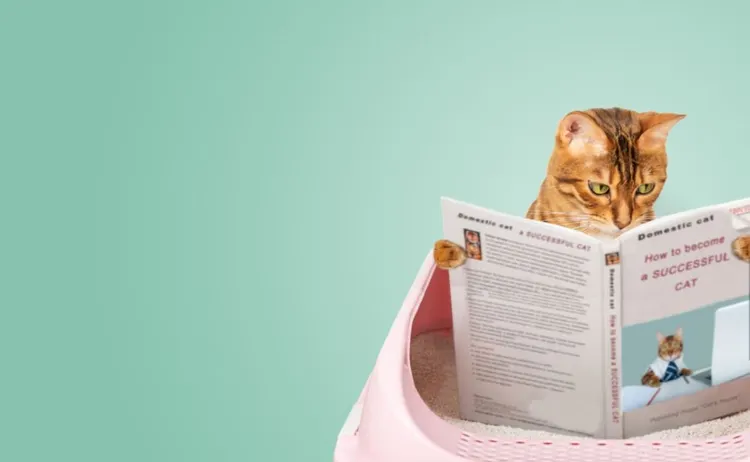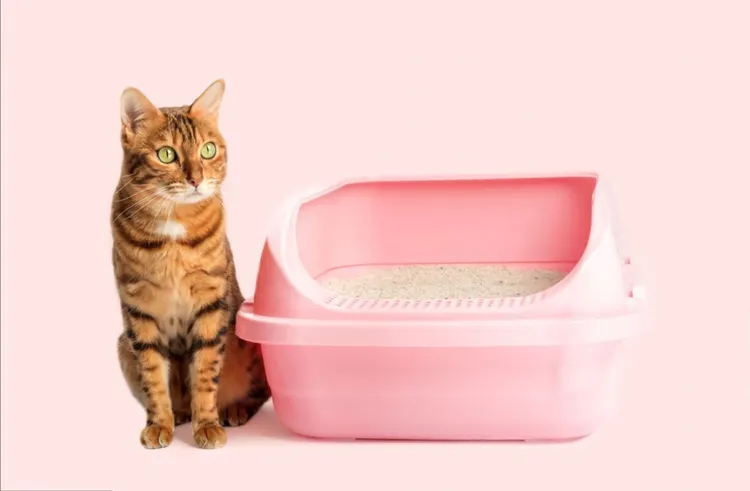Ever stared at the shelves of cat litter, wondering whether clumping or non-clumping litter is the right choice for your feline friend? You’re not alone! With so many options on the market, choosing the right cat litter can feel overwhelming. It affects not only cleanliness and convenience but also your household’s eco-footprint. Fortunately, understanding the differences between clumping and non-clumping litter can help you make the best choice for both your cat and the environment.
In this guide, we’ll break down how each type works, its pros and cons, and how to make the most eco-friendly choice. Whether you’re trying to keep your home smelling fresh or reduce waste, we’ve got you covered!
Overview of Clumping Litter
Clumping litter is the most popular type on the market today. Made from materials like bentonite clay, plant-based fibers, or silica, this litter forms solid clumps when it comes into contact with moisture. This makes it easier to scoop out waste and keep the rest of the litter box clean.
How Clumping Litter Works
Clumping litter works by absorbing moisture and binding it into solid clumps, making waste easy to remove. When your cat uses the litter box, you can simply scoop out the clumps daily, leaving the rest of the litter fresh and odor-free.
Benefits of Clumping Litter
- Convenience: With clumping litter, you can scoop out waste daily without having to replace the entire box of litter. This saves time and reduces the frequency of litter changes.
- Better Odor Control: Clumping litter excels at controlling odors because you can remove the waste quickly before it has a chance to stink up the house.
- Monitors Health: Clumping litter allows you to monitor your cat’s bathroom habits more closely, which can help you spot signs of illness like urinary tract infections or kidney issues.
- Longer Lasting: Since you’re only removing clumps and not the entire litter box, clumping litter tends to last longer before needing a full refresh.

Eco-Friendly Considerations for Clumping Litter
While traditional clumping litters are made from clay (specifically sodium bentonite), which requires environmentally harmful strip mining, there are now eco-friendly alternatives available. Some clumping litters are made from sustainable, biodegradable materials like:
- Corn: Renewable and biodegradable, corn-based litters are often flushable, reducing landfill waste.
- Wheat: Another sustainable, natural option that clumps and biodegrades.
- Recycled Paper: Made from post-consumer paper, these litters are gentle on the environment and reduce landfill waste.
However, if you’re considering traditional clay-based clumping litter, it’s important to remember that the mining process has a significant environmental impact, contributing to habitat destruction and increased carbon emissions.
Overview of Non-Clumping Litter
Non-clumping litter, as the name suggests, absorbs moisture without forming clumps. This type of litter was the standard before clumping varieties became popular, and many cat owners still prefer it for specific reasons.
How Non-Clumping Litter Works
Non-clumping litter absorbs urine and moisture but doesn’t form solid waste clumps. Instead, the moisture spreads through the litter, and once the litter becomes saturated, you’ll need to replace the entire contents of the litter box.
Benefits of Non-Clumping Litter
- More Affordable: Non-clumping litters are generally cheaper upfront compared to their clumping counterparts, making them a budget-friendly option for many households.
- Less Tracking: Non-clumping litter typically has a coarser texture, which may result in less tracking around the house, as the litter doesn’t stick to your cat’s paws as easily.
- Lower Maintenance: While you’ll need to change the litter more often, non-clumping litter doesn’t require daily scooping. This can be appealing to pet owners who prefer less daily maintenance.
Eco-Friendly Considerations for Non-Clumping Litter
Many non-clumping litters are made from natural materials like:
- Wood Chips: Often made from reclaimed wood, these are biodegradable and eco-friendly.
- Recycled Paper: A great option for sustainability, recycled paper litter is biodegradable and often gentle on sensitive paws.
- Plant-Based Products: Some non-clumping litters are made from plant fibers like corn, wheat, or grass, which biodegrade naturally and reduce the carbon footprint.
Because non-clumping litter needs to be changed more frequently, there is more waste generated, so choosing a biodegradable option is crucial to reduce your environmental impact.

Clumping vs. Non-Clumping: Key Factors to Consider
Odor Control
Clumping litter is the clear winner when it comes to odor control. Because you can remove waste daily, it prevents the buildup of odors in the litter box. Non-clumping litter absorbs moisture but doesn’t isolate it, which means odors can linger if the box isn’t changed frequently.
Verdict: If odor control is your top priority, clumping litter is likely your best bet.
Ease of Use and Cleaning
Clumping litter allows for easy daily scooping, making it more convenient for most cat owners. Non-clumping litter requires you to change the entire box more frequently, which can be more time-consuming but may appeal to owners who prefer a simpler, full-litter change routine.
Verdict: Clumping litter offers easier day-to-day maintenance, while non-clumping litter requires fewer changes but more frequent full replacements.
Cost
Non-clumping litter is generally more affordable upfront but may need to be replaced more frequently. Clumping litter, while more expensive per pound, tends to last longer because you’re only removing clumps rather than the entire box.
Verdict: Non-clumping litter is cheaper upfront, but clumping litter may be more cost-effective over time.
Health of the Cat
For cats with respiratory issues or allergies, dust is a major concern. Clumping clay litter is often dustier than non-clumping varieties, which can aggravate respiratory conditions. Some non-clumping litters, especially those made from natural materials like wood or recycled paper, produce less dust.
Verdict: For cats with respiratory sensitivities, low-dust non-clumping litters made from natural materials may be the best option.
Environmental Impact
Clumping clay litter is often criticized for its environmental impact due to the destructive mining processes used to obtain sodium bentonite. In contrast, plant-based or biodegradable clumping litters offer a more sustainable option. Non-clumping litters made from recycled or natural materials are typically eco-friendlier, though you’ll need to change them more frequently.
Verdict: Both clumping and non-clumping litters can be eco-friendly if you choose sustainable, biodegradable materials. Avoid clay-based clumping litter for a lower environmental footprint.
Which Litter is Right for Your Cat?
Choosing the right litter ultimately depends on your cat’s preferences and your lifestyle. Here are a few questions to help you decide:
- Do you have time for daily scooping? If yes, clumping litter may be more convenient. If not, non-clumping litter might fit better with your routine.
- How many cats do you have? Multi-cat households may benefit from the odor control of clumping litter.
- Is your cat sensitive to dust? Look for low-dust or dust-free non-clumping litter options, especially if your cat has respiratory issues.
Eco-Friendly Recommendations
If you’re looking for sustainable litter options, here are a few brands to consider:
- World’s Best Cat Litter (Clumping): Made from whole-kernel corn, this biodegradable litter is flushable and safe for the environment.
- Ökocat (Non-Clumping & Clumping): Made from sustainably sourced wood fibers, this brand offers both clumping and non-clumping options that are biodegradable.
- sWheat Scoop (Clumping): This wheat-based litter is both eco-friendly and effective at clumping, making it a great alternative to clay-based options.
- Yesterday’s News (Non-Clumping): Made from recycled paper, this litter is a gentle and eco-friendly option for sensitive cats.
Conclusion
Whether you choose clumping or non-clumping cat litter depends on your lifestyle, your cat’s preferences, and your commitment to eco-friendly living. Both types have their advantages and drawbacks, but by focusing on natural, biodegradable options, you can minimize the environmental impact of your cat’s litter box.
If you’re unsure which type to choose, try testing both clumping and non-clumping varieties to see which works best for you and your feline friend. After all, keeping your cat comfortable while maintaining a sustainable household is a win-win for both of you!



